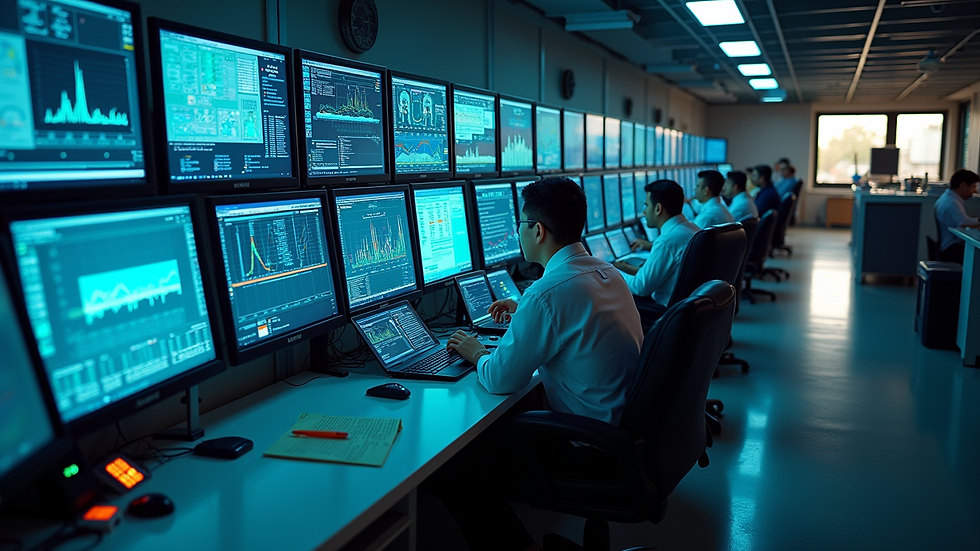Transforming Refining with Advanced Separation Technology
- cemnar0
- Oct 9
- 3 min read
Refining processes face increasing pressure to improve efficiency, reduce emissions, and lower energy consumption. The demand for cleaner fuels and stricter environmental regulations drives the need for smarter, more effective separation methods. I have witnessed firsthand how integrating innovative separation technology reshapes refining operations, delivering measurable improvements in performance and sustainability.
Driving Efficiency with Innovative Separation Technology
Separation is at the heart of refining. It determines product quality, energy use, and operational costs. Traditional methods often fall short in meeting today’s challenges. Innovative separation technology offers a leap forward by combining advanced equipment design, modular plant concepts, and digital lifecycle services.
These solutions optimize phase separation, enhance throughput, and reduce downtime. For example, modular plants allow rapid deployment and scalability, adapting to fluctuating market demands. Digital services provide real-time monitoring and predictive maintenance, minimizing unplanned outages.
The result is a refining process that runs leaner and cleaner. Energy consumption drops, emissions decrease, and uptime improves. This translates directly into cost savings and a stronger competitive position.

What is an Advanced Separation Process?
An advanced separation process goes beyond conventional distillation or filtration. It integrates proprietary equipment and process innovations to achieve higher purity, better yield, and lower energy use. These processes often involve enhanced mass transfer, improved phase disengagement, and optimized flow dynamics.
For instance, advanced packing materials in columns increase surface area and reduce pressure drop. This improves separation efficiency and lowers steam consumption. Similarly, novel internals can minimize fouling and corrosion, extending equipment life.
Advanced separation processes also leverage digital tools. Sensors and analytics enable precise control and rapid troubleshooting. Operators can adjust parameters dynamically to maintain optimal performance under varying feedstock conditions.
By adopting these processes, refiners can meet tighter product specifications while cutting operational costs. The technology supports a shift toward more sustainable manufacturing practices without sacrificing output.

Key Benefits of Advanced Separation Technology in Refining
Implementing advanced separation technology delivers multiple tangible benefits:
Energy Efficiency: Reduced steam and cooling water usage lower utility costs and carbon footprint.
Higher Throughput: Improved separation capacity allows processing more feedstock without expanding footprint.
Product Quality: Enhanced purity and tighter control meet stringent fuel and chemical specifications.
Operational Reliability: Modular designs and digital monitoring reduce downtime and maintenance needs.
Environmental Compliance: Lower emissions and waste generation support regulatory adherence.
For example, a refinery upgrading to advanced separation technology reported a 15% reduction in energy consumption and a 10% increase in product yield within the first year. These gains directly impact profitability and sustainability goals.
To maximize these benefits, it is critical to select technology tailored to specific feedstocks and product requirements. Collaboration with experienced technology providers ensures seamless integration and optimal results.

Implementing Advanced Separation Technology: Practical Steps
Successful adoption requires a structured approach:
Assessment: Analyze current separation processes to identify inefficiencies and bottlenecks.
Technology Selection: Choose proprietary equipment and modular solutions that align with operational goals.
Pilot Testing: Conduct trials to validate performance improvements and identify integration challenges.
Installation and Commissioning: Deploy modular plants and retrofit existing units with minimal disruption.
Digital Integration: Implement sensors, analytics, and lifecycle services for continuous optimization.
Training and Support: Equip operators with skills and knowledge to leverage new technology fully.
Each step demands close collaboration between process engineers, technology providers, and operations teams. Clear communication and data-driven decision-making ensure smooth transitions and rapid ROI.
Future Outlook: Advancing Low-Carbon Refining
The refining industry is evolving rapidly. Advanced separation technology will play a pivotal role in enabling low-carbon manufacturing. By cutting energy use and emissions, these solutions support global climate targets and regulatory frameworks.
Emerging trends include:
Integration with Renewable Feedstocks: Processing bio-based and recycled materials requires flexible separation systems.
Digital Twins and AI: Enhanced simulation and predictive analytics will drive smarter process control.
Circular Economy Models: Efficient separation enables recovery and reuse of valuable components, reducing waste.
I am confident that continued innovation in separation technology will unlock new opportunities for refining. Companies that invest now will gain a competitive edge and contribute to a more sustainable energy future.
Advanced separation technology is not just an upgrade - it is a transformation. It empowers refiners to meet today’s challenges with precision, efficiency, and responsibility. The path forward is clear: embrace innovation, optimize processes, and accelerate the shift to high-performance, low-carbon manufacturing.
Explore more about advanced separation technology and how it can revolutionize your refining operations.




